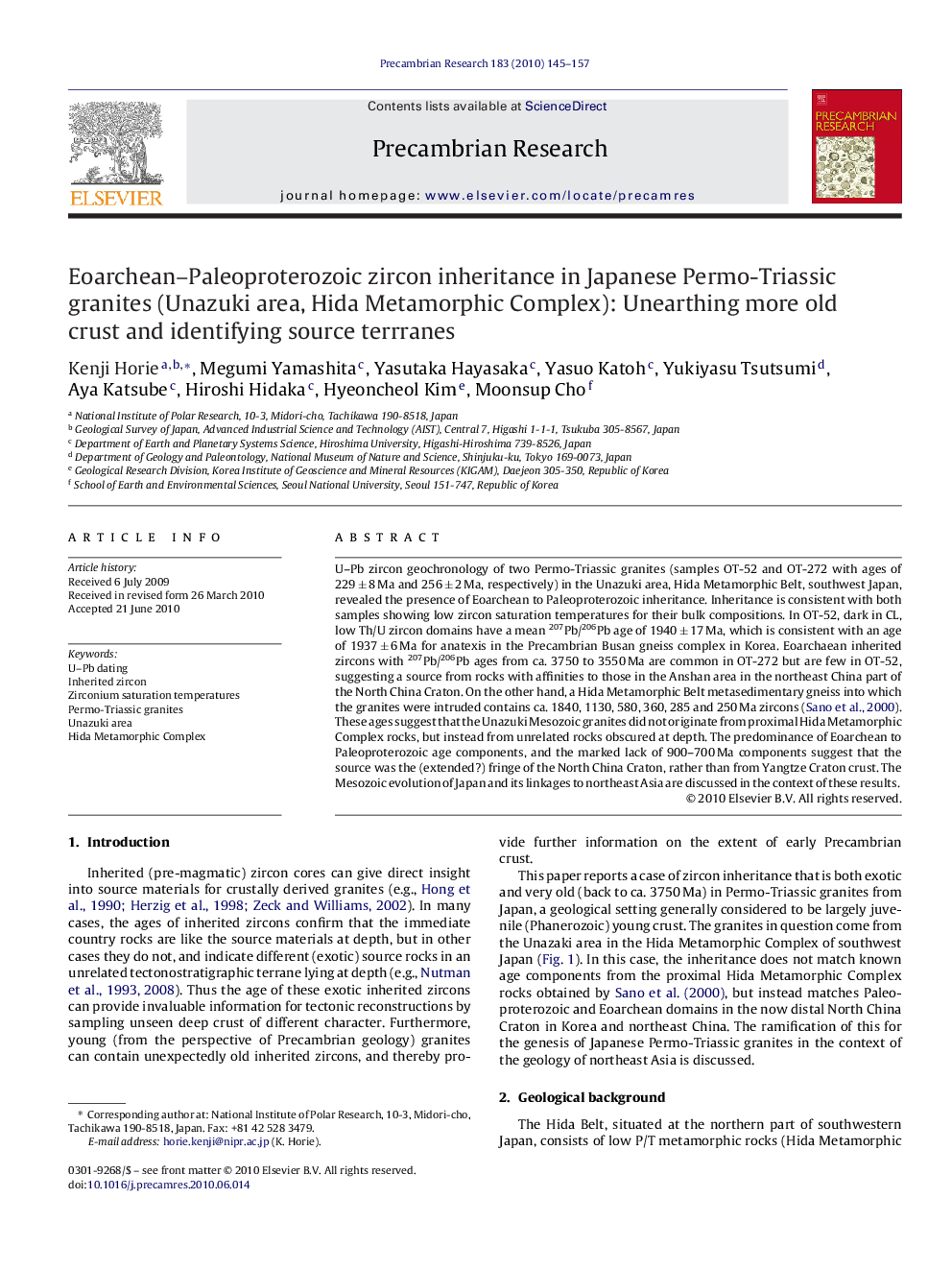| Article ID | Journal | Published Year | Pages | File Type |
|---|---|---|---|---|
| 4723984 | Precambrian Research | 2010 | 13 Pages |
Abstract
U-Pb zircon geochronology of two Permo-Triassic granites (samples OT-52 and OT-272 with ages of 229 ± 8 Ma and 256 ± 2 Ma, respectively) in the Unazuki area, Hida Metamorphic Belt, southwest Japan, revealed the presence of Eoarchean to Paleoproterozoic inheritance. Inheritance is consistent with both samples showing low zircon saturation temperatures for their bulk compositions. In OT-52, dark in CL, low Th/U zircon domains have a mean 207Pb/206Pb age of 1940 ± 17 Ma, which is consistent with an age of 1937 ± 6 Ma for anatexis in the Precambrian Busan gneiss complex in Korea. Eoarchaean inherited zircons with 207Pb/206Pb ages from ca. 3750 to 3550 Ma are common in OT-272 but are few in OT-52, suggesting a source from rocks with affinities to those in the Anshan area in the northeast China part of the North China Craton. On the other hand, a Hida Metamorphic Belt metasedimentary gneiss into which the granites were intruded contains ca. 1840, 1130, 580, 360, 285 and 250 Ma zircons (Sano et al., 2000). These ages suggest that the Unazuki Mesozoic granites did not originate from proximal Hida Metamorphic Complex rocks, but instead from unrelated rocks obscured at depth. The predominance of Eoarchean to Paleoproterozoic age components, and the marked lack of 900-700 Ma components suggest that the source was the (extended?) fringe of the North China Craton, rather than from Yangtze Craton crust. The Mesozoic evolution of Japan and its linkages to northeast Asia are discussed in the context of these results.
Keywords
Related Topics
Physical Sciences and Engineering
Earth and Planetary Sciences
Geochemistry and Petrology
Authors
Kenji Horie, Megumi Yamashita, Yasutaka Hayasaka, Yasuo Katoh, Yukiyasu Tsutsumi, Aya Katsube, Hiroshi Hidaka, Hyeoncheol Kim, Moonsup Cho,
